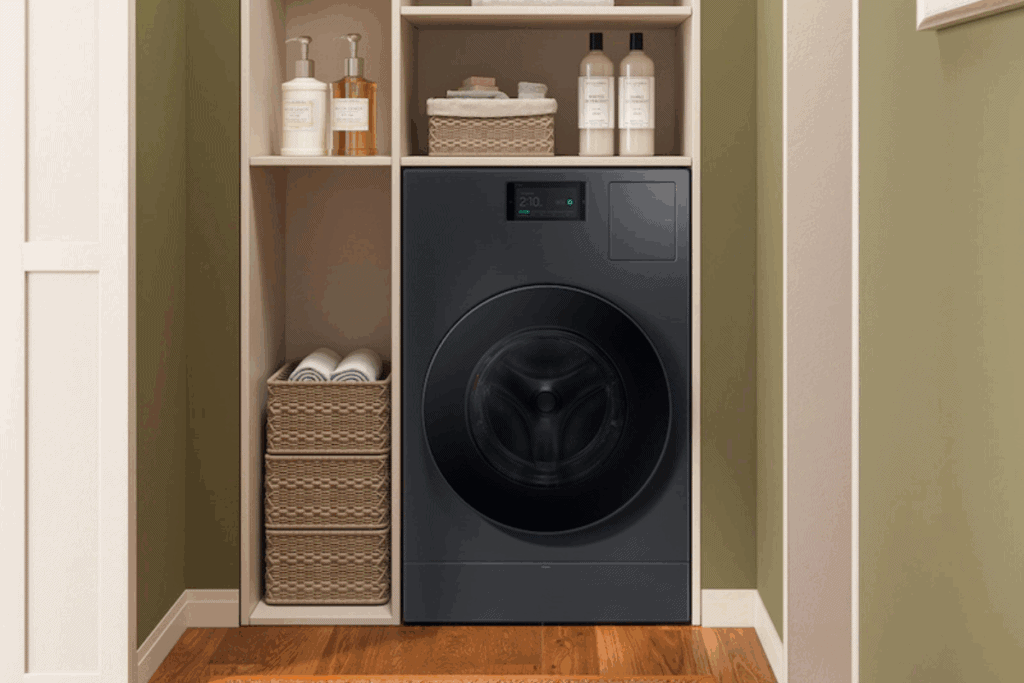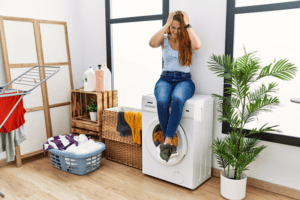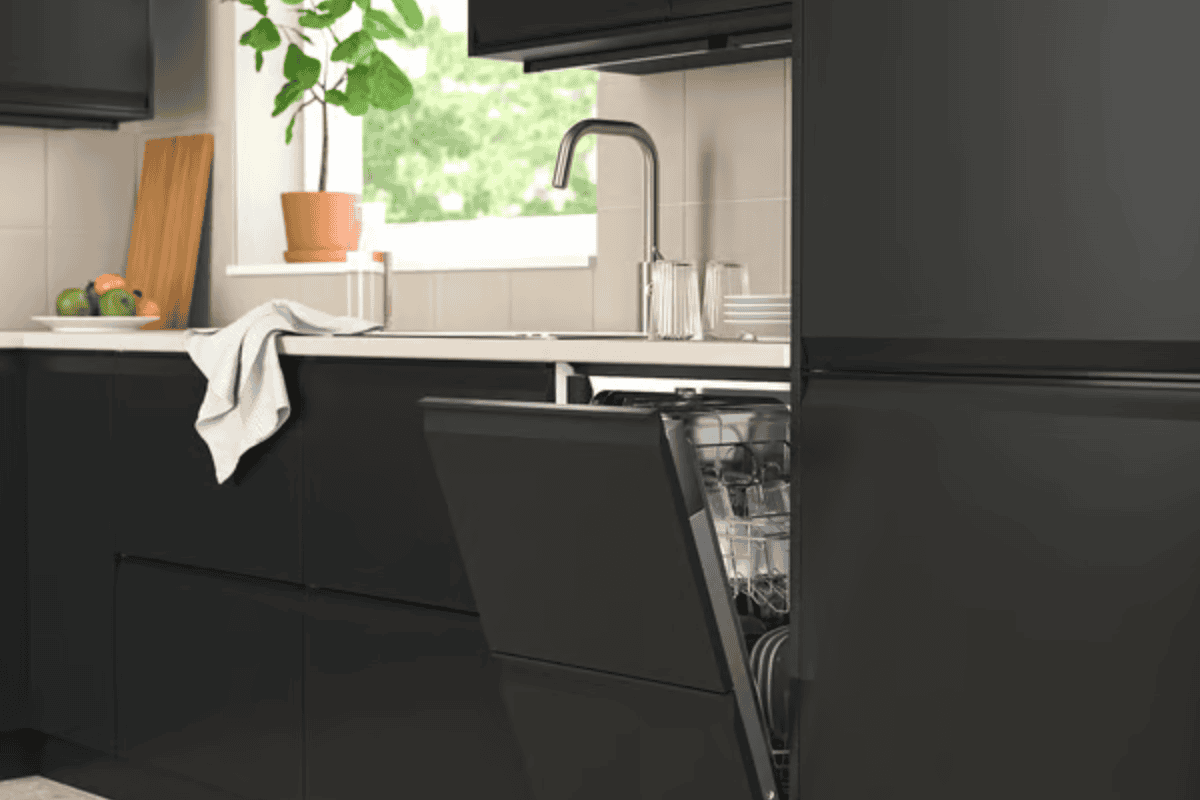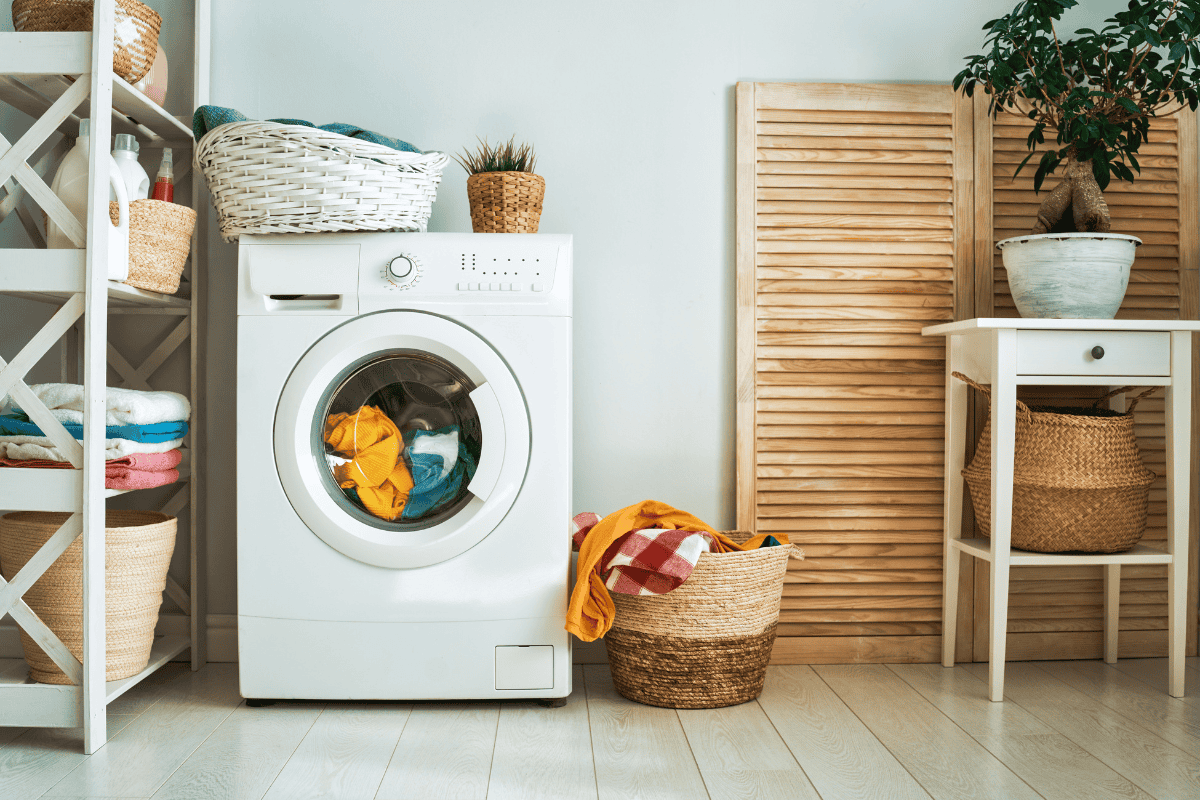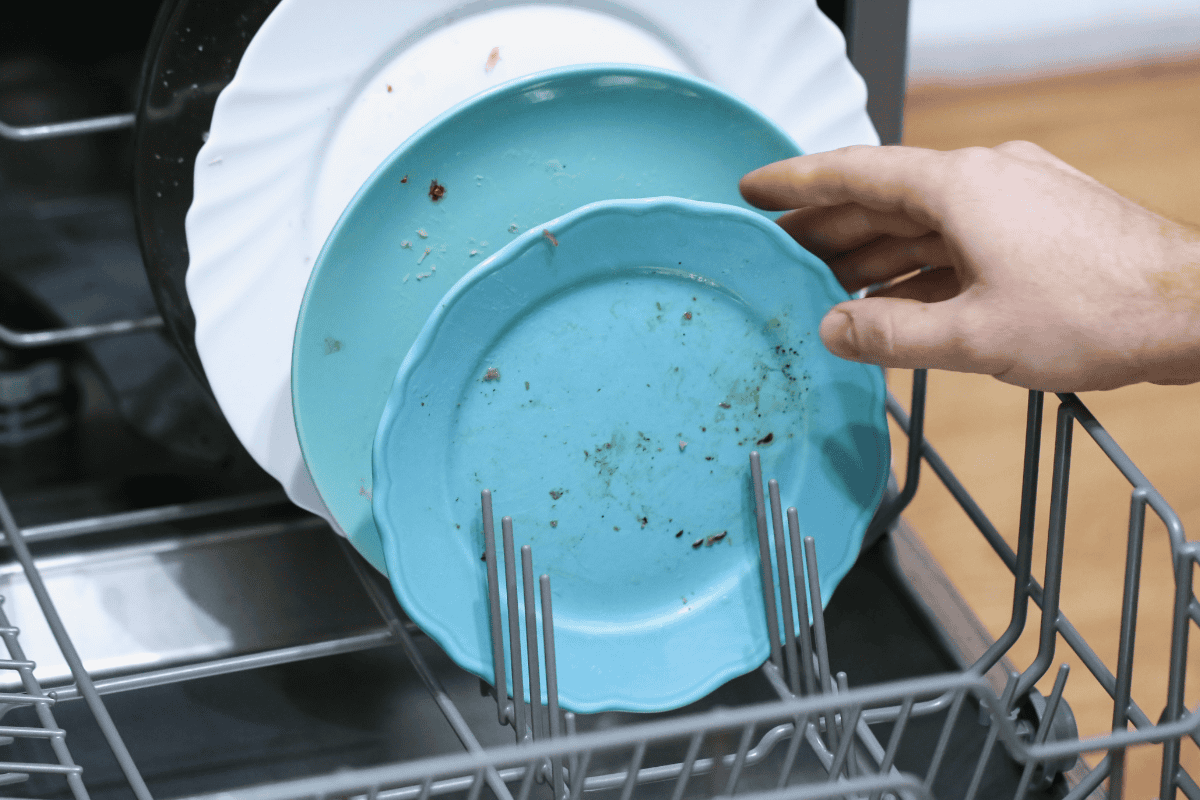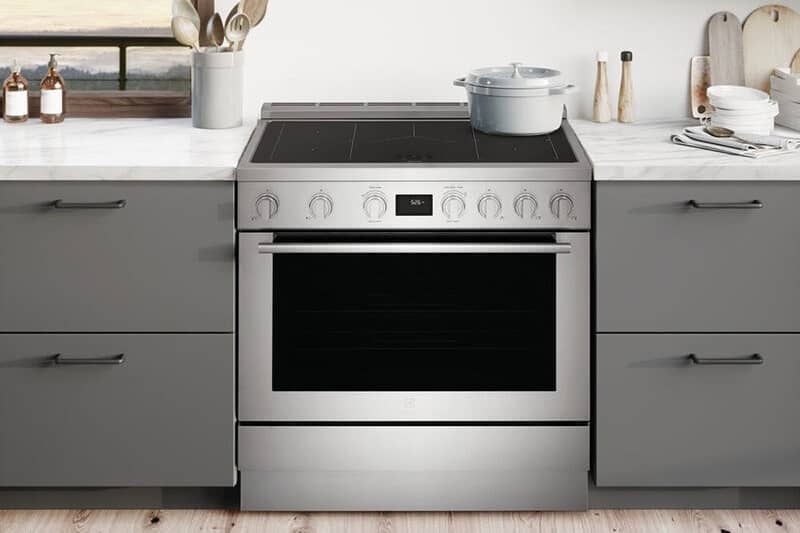It’s frustrating when your laundry routine comes to a halt halfway through the wash. Washers may stop mid-cycle for several reasons, from minor user settings to electrical or drainage problems.
Understanding what causes this can help you determine whether it’s something simple like an unbalanced load or an internal fault that needs professional attention. Below, we’ll explore the most common causes of a Samsung washer stopping mid-cycle, and what to do about it.
Why Your Samsung Washer Stops Mid-Cycle
Modern washing machines use advanced sensors and control systems to protect their components, which means even small malfunctions can trigger an automatic pause.
When a Samsung washer fails to complete a cycle, the problem usually traces back to one of several interconnected systems: power, drainage, load balance, or water control. Each of these systems depends on precise timing and signals from the washer’s electronic control board. If one signal doesn’t register properly, the washer will halt to prevent further damage or flooding.
Here are the most common causes, starting with the most common and moving toward more complex issues.
⚠️ Safety Tip: Always unplug your washer before inspecting parts or performing any troubleshooting. This prevents electrical shock and keeps you safe while checking internal components.
Faulty Lid Lock or Door Switch
Every Samsung washer includes a safety mechanism that ensures the door stays locked while the drum is in motion. This prevents spinning when the door is open. If the door switch or lid lock fails or intermittently loses contact, the washer’s control board may think the door has opened and stop the cycle.
Symptoms to watch for:
- The washer starts but shuts off after the fill or spin stage.
- The display flashes a “door” or “dc” error code.
- The lid doesn’t click or stay latched securely.
Make sure the door closes properly and that detergent residue or clothing isn’t blocking the latch. Running a few loads with a misaligned or partially functioning latch usually won’t harm the washer immediately, but it can cause inconsistent operation. If the issue repeats, schedule professional service to prevent further interruption or signal errors.
Drainage or Pump Issues
A clogged or slow drain is one of the most common reasons a Samsung washer stops mid-cycle. The washer must completely empty before it can move to the next step. If water remains in the tub, the cycle pauses as a protective measure.
What’s happening:
- Lint, coins, or small items can clog the drain filter.
- The drain hose may be kinked, blocked, or installed at the wrong height.
- A standpipe or household drain trap can also become obstructed, slowing drainage.
- The drain pump motor may weaken or fail from wear over time.
Clean the washer’s drain filter (usually found near the bottom front panel). Also, verify that the drain hose sits between 30 and 96 inches above the floor — too low or too high can cause siphoning or incomplete draining. If the hose and filter are clear but the washer still stops mid-cycle, the pump or plumbing may need professional inspection.
Unbalanced or Overloaded Load
Samsung washers use sensors to monitor drum balance throughout the spin cycle. If the load becomes uneven, the washer may pause or stop while attempting to redistribute the items. This feature prevents vibration damage to both the machine and your floor.
Signs of an imbalance:
- The washer vibrates or moves during the spin cycle.
- The display shows an “Ub” or “UE” error code.
- The washer pauses, spins slowly, then stops entirely.
Pause the cycle, open the lid, and redistribute clothing evenly around the drum. Avoid mixing heavy fabrics (like towels) with lighter ones. Overloading can also cause repeated balance errors. If this happens frequently even with balanced loads, the suspension system or vibration sensor may require replacement by a technician.
Faulty Water Inlet Valve or Pressure Sensor
If your Samsung washer stops mid-cycle while filling or draining, the water inlet valve or pressure sensor could be malfunctioning. These parts control water flow and detect how much water is in the drum.
Common indicators:
- The washer fills too slowly or not at all.
- The cycle pauses before rinsing or spinning.
- Error codes such as “4E” or “1E” appear.
Because these are electronic parts, testing them safely requires specialized tools. If cleaning the inlet screens doesn’t solve the issue, contact a technician. Incorrect replacement or wiring can cause leaks or electrical shorts.
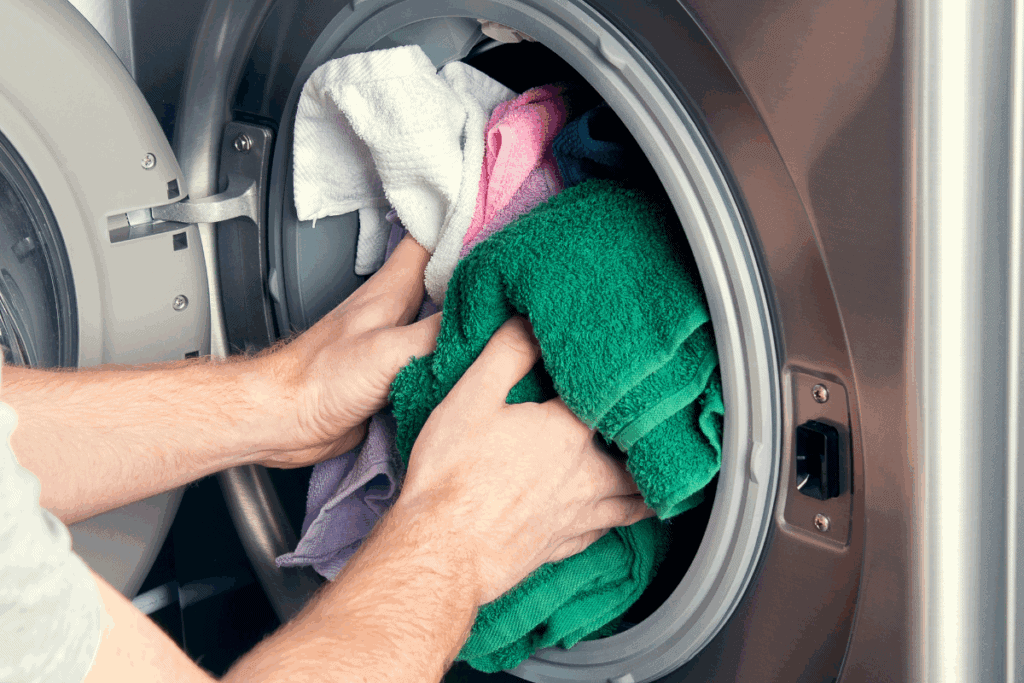
Control Board, Voltage Issues, or Programming Errors
Samsung washers rely heavily on electronic control boards to manage every step of the cycle. Power surges, fluctuations, or software glitches can interrupt these signals and cause the washer to stop mid-cycle.
Surges and voltage fluctuations:
Older homes or storm-prone areas often experience voltage dips or spikes that can momentarily reset the washer’s control board. Plugging your washer into a surge protector rated for large appliances can reduce these risks.
User settings and cycle issues:
Sometimes the cause isn’t a hardware fault but a user setting. Using a delicate or slow-spin cycle with a heavy load can cause the washer to pause, as can accidentally enabling the “Child Lock” or “Pause” function. Always double-check your selected cycle and features before assuming a part has failed.
Error codes and misdiagnosis:
An error code doesn’t always mean the indicated part is broken. For example, a “door” code could result from a wiring fault or a control board misinterpretation rather than a failed latch. If you see repeated or conflicting error codes, it’s best to let a professional diagnose the true source.
Troubleshooting advice:
You can try unplugging the washer for a few minutes to reset it. If it continues to stop mid-cycle or shows inconsistent errors, the control board or wiring harness may need inspection by a service technician.
Internal Motor or Sensor Malfunction
If your washer halts during the spin or agitation phase, the drive motor, speed sensor, or motor control board could be at fault. These components regulate drum speed and torque, and when one fails, the washer may shut down mid-cycle as a safety precaution.
Because these parts carry high voltage, only a professional should test or replace them. Attempting to handle motor assemblies or wiring without training can result in electrical shock or permanent damage.
Preventive Maintenance and Software Updates
Regular care can prevent many mid-cycle interruptions. Samsung washers feature a “Self Clean” cycle that removes detergent buildup and residue from the drum. Running this monthly can improve performance. Periodically check hoses for cracks, kinks, or leaks, and clean the drain filter every few weeks.
For Wi-Fi–connected models, check the Samsung SmartThings app or your washer’s display to see if a firmware update is available. Software updates can correct minor bugs that affect cycle timing, water levels, or communication errors between components.
Final Note on a Samsung Washer That Stops Mid-Cycle
When a Samsung washer stops mid-cycle, it’s often your appliance’s way of signaling that something needs attention. Routine maintenance and proper setup go a long way in preventing interruptions. But when your washer continues to stop unexpectedly, professional service is the safest way to restore its performance.
For accurate diagnosis and expert repair, contact your Monroe Samsung washer specialists. Our technicians combine factory-trained expertise with professional care to keep your laundry running smoothly.

